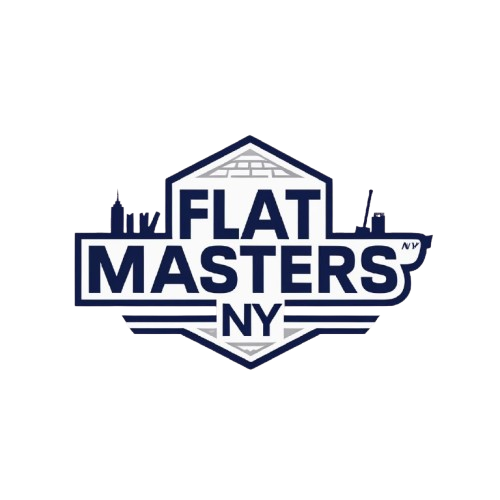Professional Flat Roof Extension Services for Your Home
After twenty-three years working flat roofs across Queens, I can tell you that extending a flat roof properly ranges from $12 to $28 per square foot, depending on the complexity and materials. Most homeowners looking at a basic 400 square foot extension are looking at $4,800 to $11,200 for the project. But here's what really matters - it's not just about slapping more roofing material on there.
The thing about flat roof extensions is they're deceptively complex. Last month we finished a beautiful extension in Forest Hills where the homeowner wanted to add 600 square feet to accommodate their growing family. What looked straightforward on paper turned into a three-week project because of drainage issues we discovered once we started.
Understanding Flat Roof Extension Basics
When you're thinking about how to extend a flat roof, you're really talking about creating a seamless connection between existing and new roofing systems. This isn't like adding a pitched roof section where gravity does most of the drainage work. Every square foot of that flat surface needs to drain properly, or you'll have problems within the first heavy rainstorm.
The structural elements come first - always. We need to ensure the existing building can handle the additional load, especially here in Queens where we get those heavy winter snow loads. I've seen too many DIY attempts where someone focused on the roofing membrane but ignored the deck structure underneath.
Our typical roof extension process starts with a thorough structural assessment. My structural engineer partner, Mike Rodriguez from Astoria Engineering, comes out for anything over 300 square feet. It's not required by code for smaller extensions, but after seeing a deck failure in Elmhurst a few years back, we don't take chances.
Cost Breakdown for Queens Flat Roof Extensions
| Extension Size | Basic EPDM | Modified Bitumen | TPO Premium |
|---|---|---|---|
| 200-300 sq ft | $2,800-$4,200 | $3,400-$5,100 | $4,200-$6,300 |
| 400-500 sq ft | $4,800-$7,500 | $6,000-$9,500 | $7,200-$12,000 |
| 600-800 sq ft | $7,200-$11,200 | $8,400-$14,400 | $10,800-$18,400 |
Those numbers include materials, labor, and basic permits, but they don't include structural modifications. If we need to add beams or reinforce the existing deck, add another $3-8 per square foot depending on what we find.
The Engineering Side Nobody Talks About
Here's where most contractors cut corners, and it drives me crazy. A proper flat roof extension isn't just about matching the existing roof height and calling it good. The drainage has to work as one integrated system.
We calculate water flow rates based on the total roof area - existing plus extension. That beautiful 500 square foot addition you're planning? It's going to dump an extra 312 gallons of water during a typical one-inch rainstorm. Where's that water going? If your existing roof already struggles with drainage during heavy rains, adding square footage without addressing the underlying drainage design is asking for trouble.
My team uses a minimum 1/4-inch per foot slope on all extensions, even though code allows 1/8-inch in some situations. Why? Because ponding water kills flat roofs, and Queens gets some serious downpours. I've replaced too many roofs that met code but failed in practice.
The membrane transitions are critical too. We're not just butting two pieces of roofing material together and hoping for the best. Proper seaming requires understanding thermal movement, substrate preparation, and adhesion chemistry. When I see a leak at the junction between old and new roof sections, ninety percent of the time it's because someone skipped steps during the membrane integration.
Material Selection for Queens Weather
Living here, you know our weather pattern. Hot, humid summers that bake rooftops, then freeze-thaw cycles all winter that test every seam and joint. Not all flat roofing materials handle this well.
EPDM rubber remains my go-to for most residential extensions under 600 square feet. It's flexible, handles temperature swings well, and repairs easily when something goes wrong. The seams are mechanically fastened or fully adhered - both work fine if done properly.
Modified bitumen makes sense for larger extensions or where you want extra durability. It's essentially asphalt with polymers added for flexibility. We typically install it in two layers with a torch-applied top sheet. Costs more than EPDM but lasts longer in high-traffic areas.
TPO is gaining popularity, especially for extensions where energy efficiency matters. The white surface reflects heat well, which helps with summer cooling costs. But installation quality matters more with TPO than other materials - the seams are heat-welded, and there's less room for error.
Common Extension Challenges in Queens
Every neighborhood presents unique challenges. In Astoria, we deal with salt air from the East River that accelerates metal corrosion. Flushing has a lot of older homes where the existing roof structure barely meets current loads. Corona and Elmhurst have many attached homes where property line clearances affect extension design.
Building department requirements vary by project size and structural changes. Extensions under 240 square feet typically don't require permits if you're not modifying the building structure. But honestly? Pull the permit anyway. It's $200-400 and covers you if something goes wrong.
The biggest challenge isn't technical - it's setting realistic expectations. Homeowners see flat roofs as simple, but a proper extension involves coordination between multiple trades. Structural work first, then roofing deck, insulation, membrane, and finally flashing and drainage connections.
How to Extend a Flat Roof: The Process
Start with accurate measurements and a clear plan. We use laser levels to establish the existing roof plane and identify any structural issues before starting work.
Structural preparation comes next. This might mean adding joists, installing blocking, or reinforcing existing framing. Can't skip this step - I don't care how simple the project looks on paper.
The new deck gets installed with proper fastening and appropriate gaps for thermal expansion. We use 5/8-inch plywood or OSB, minimum, fastened every 6 inches along the perimeter and 12 inches in the field.
Insulation and vapor barriers follow manufacturer specifications. This isn't the place to improvise - each material system has specific requirements for substrate preparation.
Membrane installation requires attention to detail at every step. Surface preparation, proper adhesion, correct seam overlap, and systematic quality checks throughout the process.
Drainage Integration
This is where experience really shows. You can't just extend the existing drainage pattern and hope it works. We model water flow across the entire roof surface, including the extension.
Sometimes this means adding internal drains or modifying existing gutters. Other times we need to create specific drainage channels or cricket systems to direct water properly.
Scupper sizing becomes critical on larger extensions. The existing scuppers might handle the original roof area fine, but add 500 square feet of drainage area and suddenly they're undersized for heavy rain events.
Long-term Performance Considerations
A well-executed flat roof extension should perform as well as the original roof system. But there are maintenance considerations specific to extensions.
The transition areas between old and new roofing need annual inspection. Thermal cycling stresses these joints more than uniform roof areas. We recommend checking seams and flashing twice yearly - spring and fall.
Drainage systems need regular maintenance, especially if the extension changes water flow patterns. Gutters that worked fine for years might need more frequent cleaning with additional roof area feeding them.
Snow load distribution changes with extensions. The original roof was designed for specific loads, and adding square footage can create uneven loading patterns during heavy snow events.
Why Choose Professional Installation
I get it - flat roofs look simple, and there's tons of DIY information online. But here's what twenty-three years in Queens has taught me: every roof is different, and small mistakes become big problems fast.
The material costs for a typical extension run $4-8 per square foot. Professional installation adds $8-15 per square foot. Seems expensive until you consider that a failed DIY installation often costs more to fix than it would have cost to do right the first time.
At Flat Masters NY, we've built our reputation on doing extensions right the first time. No shortcuts, no "good enough" approaches - just solid workmanship backed by real experience.
Our installation warranty covers materials and labor for five years on residential extensions. Most importantly, we're local - when you need service or have questions, we're right here in Queens.
Thinking about extending your flat roof? Let's discuss your specific situation and develop a plan that works for your home, your budget, and Queens weather conditions.

